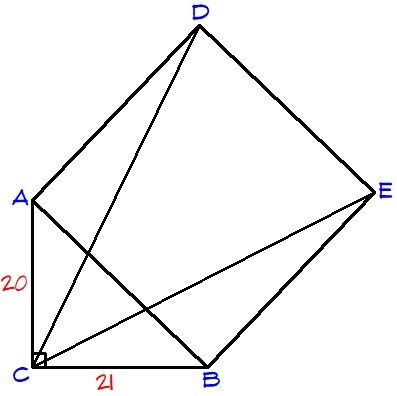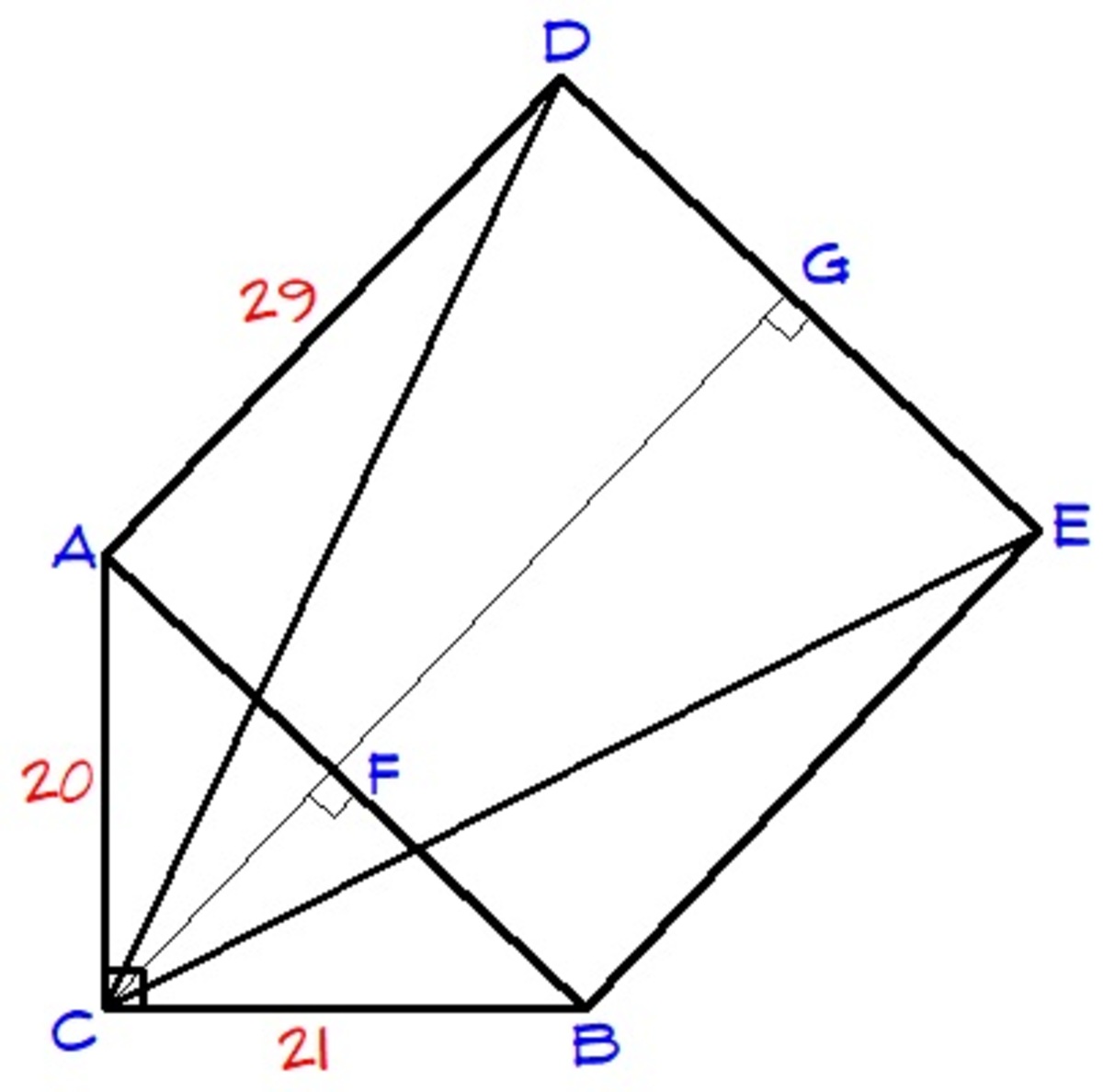Right triangle and a square
 △
A
C
B
is right angled at
C
. Square
A
B
E
D
is drawn. If
A
C
=
2
0
and
C
B
=
2
1
, find the perimeter of
△
D
C
E
. If your answer can be expressed as
a
+
b
+
c
where
a
,
b
and
c
are positive co-prime integers and
a
and
c
are square free, find
a
+
b
+
c
.
△
A
C
B
is right angled at
C
. Square
A
B
E
D
is drawn. If
A
C
=
2
0
and
C
B
=
2
1
, find the perimeter of
△
D
C
E
. If your answer can be expressed as
a
+
b
+
c
where
a
,
b
and
c
are positive co-prime integers and
a
and
c
are square free, find
a
+
b
+
c
.
The answer is 4232.
This section requires Javascript.
You are seeing this because something didn't load right. We suggest you, (a) try
refreshing the page, (b) enabling javascript if it is disabled on your browser and,
finally, (c)
loading the
non-javascript version of this page
. We're sorry about the hassle.
2 solutions
 Draw
C
G
perpendicular to
D
E
. Let point
F
be the intersection of
A
B
and
C
G
. By pythagorean theorem,
A
B
=
2
0
2
+
2
1
2
=
2
9
.
Draw
C
G
perpendicular to
D
E
. Let point
F
be the intersection of
A
B
and
C
G
. By pythagorean theorem,
A
B
=
2
0
2
+
2
1
2
=
2
9
.
Since △ A F C ∼ △ A C B , we have : 2 0 C F = 2 9 2 1 or C F = 2 9 4 2 0 . Apply pythagorean theorem twice: A F = 2 0 2 − ( 2 9 4 2 0 ) 2 = 2 9 4 0 0 and B F = 2 1 2 − ( 2 9 4 2 0 ) 2 = 2 9 4 4 1 . Now, C G = C F + 2 9 = 2 9 1 2 6 1 .
The perimeter of △ D C E is
( 2 9 1 2 6 1 ) 2 + ( 2 9 4 0 0 ) 2 + 2 9 + ( 2 9 1 2 6 1 ) 2 + ( 2 9 4 4 1 ) 2 = 2 0 8 1 + 2 9 + 2 1 2 2 .
The desired answer is 2 0 8 1 + 2 9 + 2 1 2 2 = 4 2 3 2 .
If you take C as the origin then D is (20,41) while E is (41,21). Then the required perimeter = √(20²+41²)+√(41²+21²)+√(20²+21²) = √2081 + √2122 + 29. Hence, a + b + c = 4232